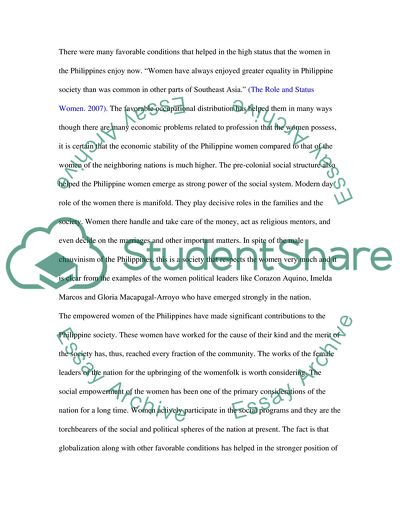Cite this document
(Status of Women in the Philippines Essay Example | Topics and Well Written Essays - 2250 words, n.d.)
Status of Women in the Philippines Essay Example | Topics and Well Written Essays - 2250 words. Retrieved from https://studentshare.org/gender-sexual-studies/1710093-status-profile-of-women-in-the-philippines
Status of Women in the Philippines Essay Example | Topics and Well Written Essays - 2250 words. Retrieved from https://studentshare.org/gender-sexual-studies/1710093-status-profile-of-women-in-the-philippines
(Status of Women in the Philippines Essay Example | Topics and Well Written Essays - 2250 Words)
Status of Women in the Philippines Essay Example | Topics and Well Written Essays - 2250 Words. https://studentshare.org/gender-sexual-studies/1710093-status-profile-of-women-in-the-philippines.
Status of Women in the Philippines Essay Example | Topics and Well Written Essays - 2250 Words. https://studentshare.org/gender-sexual-studies/1710093-status-profile-of-women-in-the-philippines.
“Status of Women in the Philippines Essay Example | Topics and Well Written Essays - 2250 Words”, n.d. https://studentshare.org/gender-sexual-studies/1710093-status-profile-of-women-in-the-philippines.


